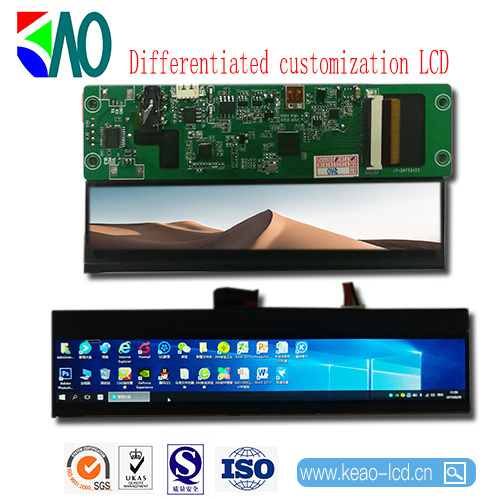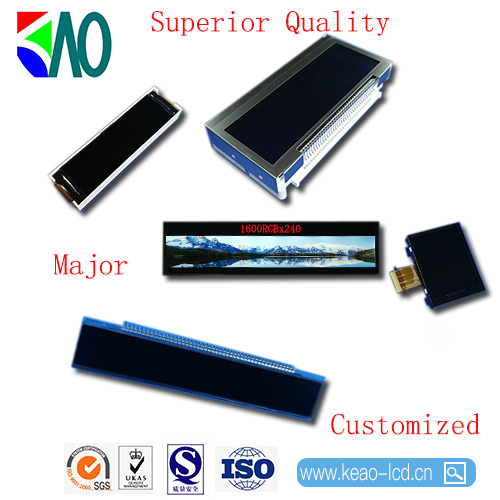The difference between HDR and UHD technology, Dongguan Keao Photoelectric Co., Ltd. pays great attention to the update of LCD t
Dongguan Keao Photoelectric Co., Ltd. R&D and production of LCD module
2019-07-18
Friends who care about display technology know that HDR-equipped displays will also be popular. For a while, we still have some unfamiliar HDR technology quietly going to the front desk. Today let's look at the HDR display. And the development of this technology will inevitably affect our daily entertainment life.
Understanding HDR Technology:
HDR (High-Dynamic Range) is translated as "High-Dynamic Range Display Technology". The term was first mentioned in the field of photography. It is a technology that can enhance the dynamic range of photographs, i.e. the contrast between the brightest white and the darkest black. For example, the iPhone supports HDR photography. It can take three photos with different exposures and synthesize them through HDR technology, so as to get better results. It can be seen that the synthesized photos with HDR have higher clarity and stronger hierarchy.
HDR technology on display devices is similar now, except that it achieves HDR effect directly through the display device processing unit, rather than through software post-synthesis. For example, the HDR effect on the devices like the iPhone is similar to that on the PC we usually use Photoshop to decorate the picture with SLR effect. The HDR TV is equivalent to the SLR camera, and the direct result is the SLR effect. HDR devices can make the details of the highlights and shadows clearly displayed on the screen, which can bring us better visual effects.
Behind Clear Display: Exploration of HDR Display Technology
Through the introduction above, we know that the display device using HDR technology has a higher-definition display effect. So what technology is behind HDR? First of all, HDR display devices are supported to have a wider dynamic range, so that different brightnesses can be fully presented. HDR-enabled televisions have a higher dynamic range than ordinary televisions, which refers to the highest overall contrast that can be found in an image. Usually we use a ratio, such as "200:1", "400:1" and so on, which depends on the overall range of brightness and the smallest brightness level. Obviously, the larger the dynamic range, the better the contrast and color accuracy of the display. The most intuitive feeling is that the image (or image) appears to be more clearly displayed, with a stronger sense of hierarchy and richer color.
Secondly, HDR technology can display more abundant information. For ordinary TV, in order to meet the technical upper limit of TV, image processing unit will greatly reduce the amount of image information. In terms of brightness, ordinary TV brightness is generally between 500 and 1000 Nites, so the details of the highlights and dark parts of the picture can not be displayed. A HDR-enabled TV can reach 5,000 NIT, and its brightness is much higher than that of a regular TV.
Of course, HDR is not to simply increase the brightness of TV. The purpose of improving brightness is to widen the scope of image display, so as to better render light and shadow. In this way, we can see the details in both shadows and highlights. For example, the scene under strong light will not be so dazzling, the color will be fuller and more real, the gradual change of tone will be more delicate, while the shadows show blurred details more clearly, HDR can show a more natural and real image.
In a word, HDR greatly improves contrast and color accuracy by improving the dynamic range and brightness of display devices. Bright parts of the screen will become brighter, making them look more "deep", while the improvement of color accuracy will make blue, green, red and all the colors between them. Colors all look brighter and purer, and the color transition is more real and natural.
Knowledge: What's the difference between HDR and UHD?
With the popularity of 4K display devices, we often hear the term UHD, UHD is ultra-high resolution, we can understand it as 4K resolution. Its main function is to greatly increase the number of pixels, that is, we often say on the PC to improve the display resolution, 4K resolution can reach 4096x2160. The main function of HDR is to make the pixels more accurate and abundant. It has nothing to do with resolution. That is to say, on 2K or 4K resolution display devices, HDR can make them display better than those that do not support HDR. Of course, HDR and UHD can work closely together, and all the HDR TVs that have been published now support 4K UHD.
According to scientists, our human eye is actually a "super camera" with a pixel of 576 million. We can see objects and images better in our daily life than the current top display devices. With the development of display technology, people are demanding higher and higher display quality, especially those who like to watch movies. For example, the most quality-seeking friends like to watch Blu-ray high-definition movies. Now the brand-new 4K Blu-ray movies also list HDR as the standard technology. Obviously, the combination of 4K and HDR means that ultra-high definition and ultra-high dynamic images are coming. It will have a clearer and more hierarchical display effect than the current 1080p full-HD. In this way, the future 4K HDR display effect can enable us to have a more realistic visual effect when watching the blockbuster.
Of course, UHD display will also bring better display effect in our daily video chat and online shopping, and add more fun to our life. For example, when shopping online, a high-definition photo that is closer to the real object can obviously give us a more intuitive and perceptual understanding of the purchased items. However, it should be noted that HDR display device performance is not necessarily better than non-HDR device, because in order to achieve ultra-high-definition display effect, in addition to HDR hardware requirements, also need to use film support, such as HDR TV needs HDR content to highlight its value.
Science and technology will never end. Dongguan Keao Optoelectronic staff are brave in exploring and learning, laying a scientific and technological foundation for research and development and production of high-quality products.
Related info











